Invited Speakers – 2018
Prof. Rajaâ Cherkaoui El Moursli
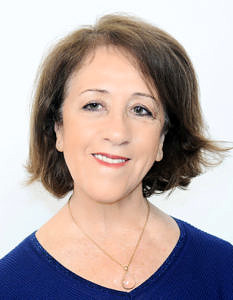
Rajaâ Cherkaoui El Moursli, a professor at Rabat’s Mohammed V University, was the first Moroccan woman to win the prestigious L’Oréal–UNESCO award in 2015. The award cited her participation and contribution to the proof of the existence of the Higgs Boson. This particle is responsible for the creation of mass. She leads a Moroccan research team for the ATLAS experiment at CERN. She set up the first master’s degree in medical physics in Morocco. She has been honored for her contribution and noteworthy achievements in science and technology fields in the Islamic world, during the Organization of Islamic Cooperation’s First Islamic Summit on Science and Technology on 2017. She was nominated resident member of the Hassan II Academy of Sciences and Technology in Morocco, as well as a Fellow of the African Academy of Sciences and a member of TWAS. Currently, she is a member of the Moroccan team for the setup of a production line of optical modules for the construction of KM3NeT. KM3NeT is a research infrastructure housing the next generation neutrino telescopes, located in the deepest seas of the Mediterranean. Aside to that she held the position of Director of the Nuclear Physics Laboratory and Vice President of the University.
Contact:
Faculty of Sciences
Mohammed V University
4 Avenue Ibn Battozta
B. P. 1014 R, Rabat, Morocco
Email: rajaa.cherkaoui@um5.ac.ma
Prof. Annick Loiseau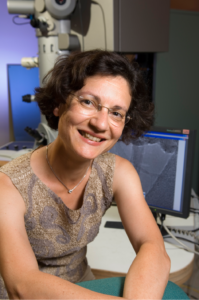
I am a Physicist with 39 years of large expertise in Condensed Matter Physics, Nanoscience, and in Transmission Electron Microscopy (TEM) and spectroscopies techniques. Following very first studies on the plasticity of aeronautic alloys, I have focused my researches on structural and thermodynamic properties of metallic alloys and more particular chemical order phenomena on lattice. Thanks to dedicated experiments using TEM, that I have defined and conducted, I have evidenced and quantified various critical phenomena controlling the behaviour of domain walls in the vicinity of phase transitions and shown how these behaviours were depending on the order of the transition. I have also identified and studied a new class of incommensurate structures and a variety of quasi–crystalline phases in aeronautic alloys. From 1994, I progressively turned my researches towards the Nanosciences, an emerging field at that time and I have been leading one of the pioneering teams in France, conducting research on the synthesis, structural, electronic and optical properties of 1D and 2D objects issued from van der Waals materials such as graphene and boron nitride. Carbon nanotubes were discovered in late 1991 and I published in 1996 the first paper on the experimental observation of boron nitride single wall nanotubes and co– authored in 1997 the first paper on large scale synthesis of carbon single wall nanotubes. Therapid development of this research field led me to implement from 1998 at CNRS–Onera interdisciplinary research programs on Nanoscience, first focused on nanotubes and extended now to graphene and other 2D materials. The general objective is to federate multidisciplinary expertise and tools for studying 1D and 2D materials from their basic properties to their applications in link with aeronautics. The main researches developed in this framework have included developing synthesis techniques of various kinds of single wall nanotubes and of 2D materials based on carbon, boron and nitrogen, understanding and modelling thanks to appropriate numerical simulations techniques their formation mechanisms, developing optoelectronic devices for metrology applications. Few examples of my main research achievements include first synthesis and TEM characterization of BN nanotubes, nucleation/growth model of carbon nanotubes in both high temperatures and CVD techniques used as a reference worldwide, characterization metrics using TEM, electron and optical spectroscopies. Along this line, a particular effort has been focused to define appropriate investigation techniques able to study electronic and optical properties of BN materials from bulk to 2D layers, owing to their large band gap and to demonstrate the nature of their luminescence.
Vita:
o 1980: Graduate from the ENSCP (now Chimie Paris Tech) and Mastership in Physics of
U. Paris 6
o 1985: Thèse de Doctorat d’Etat, U. Paris 6
o 1985: Junior Scientist ONERA
o 1990: Master of Research ONERA
o 1996: Director of Research ONERA
o 1998. Head of the Federative Research Program on carbon nanostructures at ONERA
o 1998 –2008: Head of the Research Network (GDR) on nanotubes at CNRS
o 2009: Head of the National and International Research Network (GDR and GDR–I) on
Science of Graphene and Nanotubes (present acronym ‘Graphene and co’) at CNRS
o Since 2010: Co–chair of the steering committee of the annual NT conference
o Since 2013: Member of the Executive Board of the Flagship graphene launched by the
EC Awards:
o 2010: Chevalier de la Légion d’Honneur
o 2006: Silver Medal of Physics of the CNRS
o 1999: Price ‘Louis Ancel’ (Condensed Matter Physics) of the French Physics Society.
o 1988: Grand prix (Great Price) ‘Aluminium Péchiney’ of the French Academy of
Sciences.
o 1980: Medal of Metallurgy of the ENSCP
Contact:
Laboratoire d’Etude des Microstructures
ONERA–CNRS
29 avenue de la Division Leclerc
92320 Châtillon Cedex, France
Email: annick.loiseau@onera.fr
Prof. Katharina Landfester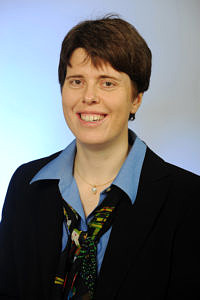
Katharina Landfester received her doctoral degree in Physical Chemistry after working in 1995 at the Max Planck Institute for Polymer Research (MPIP). After a postdoctoral stay at the Lehigh University (Bethlehem, PA), she worked at the Max Planck Institute of Colloids and Interfaces in Potsdam (Germany) leading the mini–emulsion group. From 2003 to 2008, she was full professor at the University of Ulm. Here, she started her activities in the field of biomedical applications in cooperation with several medical groups working on the interaction of nanoparticles with different cell compartments, the labelling of cells and the delivery of substances to specific sides. She joined the Max Planck Society in 2008 as one of the directors of the MPIP. She was awarded the Reimund Stadler prize of the German Chemical Society and the prize of the Dr. Hermann Schnell Foundation, followed by the Bruno Werdelmann Lecturer in 2012 and the Bayer Lecturer in 2014. Her research focusses on creating functional colloids for new material and biomaterial applications. She has published more than 600 papers in international journals, 30 reviews and holds more than 50 patents.
Contact:
Max Planck Institute for Polymer Research
Department of Physical Chemistry of Polymers
Ackermannweg 10
55128 Mainz, Germany
Email: landfest@mpip–mainz.mpg.de
Prof. Nancy S. Goroff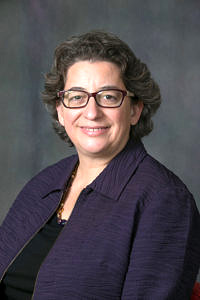 Nancy S. Goroff is Professor and Chair of the Chemistry Department at Stony Brook University (SBU). Prof. Goroff earned her PhD from the University of California, Los Angeles (UCLA) in 1994, working with Prof. François Diederich and the late Prof. Orville Chapman. Her graduate research, supported by a National Science Foundation (NSF) Graduate Research Fellowship, focused on the mechanism of formation of fullerenes, using organic precursors to target specific intermediates and examine their gas– phase reactions. After graduate school, she was an NSF Postdoctoral Fellow at Michigan State University, working with Prof. James E. Jackson on the chemistry of carbenes. She then held a Research Corporation–supported postdoctoral fellowship in Chemical Education at the University of Michigan, working with Prof. Brian P. Coppola and the late Prof. Seyhan Ege. Prof. Goroff moved to Stony Brook to start her independent career in 1997. Her research at SBU focuses on carbon–rich molecules and materials. Her group has explored the self–assembly and solid–state polymerization of diynes and polyynes, especially using halogen bonding as a crystal design motif. In addition, she and her students have pursued efficient synthetic routes to phenanthrenes and thiophenanthrenes as precursors to new conjugated polymers. In 2013, she was awarded the American Chemical Society Award for Creative Research and Applications of Iodine Chemistry. In addition to her Chemistry research, Prof. Goroff has long focused on ways to improve graduate education. After co–leading SBU’s Chemistry team for the Carnegie Initiative on the Doctorate, she served as Graduate Program Director in Chemistry from 2007 to 2012. In 2013, she became Associate Provost for the Integration of Research, Education, and Professional Development, and in 2016, she served as Interim Dean of the Graduate School at Stony Brook. She currently serves as Principle Investigator for an NSF Innovations in Graduate Education grant to build and improve a peer–led career development program for PhD students and postdocs. Another major interest has been helping students improve their written and oral communication skills, in collaboration with the SBU Program in Writing in Rhetoric and the Alan Alda Center for Communicating Science.
Nancy S. Goroff is Professor and Chair of the Chemistry Department at Stony Brook University (SBU). Prof. Goroff earned her PhD from the University of California, Los Angeles (UCLA) in 1994, working with Prof. François Diederich and the late Prof. Orville Chapman. Her graduate research, supported by a National Science Foundation (NSF) Graduate Research Fellowship, focused on the mechanism of formation of fullerenes, using organic precursors to target specific intermediates and examine their gas– phase reactions. After graduate school, she was an NSF Postdoctoral Fellow at Michigan State University, working with Prof. James E. Jackson on the chemistry of carbenes. She then held a Research Corporation–supported postdoctoral fellowship in Chemical Education at the University of Michigan, working with Prof. Brian P. Coppola and the late Prof. Seyhan Ege. Prof. Goroff moved to Stony Brook to start her independent career in 1997. Her research at SBU focuses on carbon–rich molecules and materials. Her group has explored the self–assembly and solid–state polymerization of diynes and polyynes, especially using halogen bonding as a crystal design motif. In addition, she and her students have pursued efficient synthetic routes to phenanthrenes and thiophenanthrenes as precursors to new conjugated polymers. In 2013, she was awarded the American Chemical Society Award for Creative Research and Applications of Iodine Chemistry. In addition to her Chemistry research, Prof. Goroff has long focused on ways to improve graduate education. After co–leading SBU’s Chemistry team for the Carnegie Initiative on the Doctorate, she served as Graduate Program Director in Chemistry from 2007 to 2012. In 2013, she became Associate Provost for the Integration of Research, Education, and Professional Development, and in 2016, she served as Interim Dean of the Graduate School at Stony Brook. She currently serves as Principle Investigator for an NSF Innovations in Graduate Education grant to build and improve a peer–led career development program for PhD students and postdocs. Another major interest has been helping students improve their written and oral communication skills, in collaboration with the SBU Program in Writing in Rhetoric and the Alan Alda Center for Communicating Science.
Contact:
Department of Chemistry
Stony Brook University
100 Nicolls Road
Stony Brook, NY 11790–3400, USA
Email: nancy.goroff@stonybrook.edu
Prof. Mar García Hernández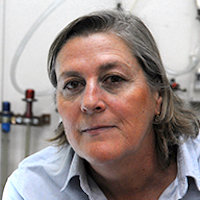 Mar Garcia–Hernandez is Research Professor at CSIC. She got her Degree in Chemical Physics in 1983 at the Universidad Complutense de Madrid. She did her PhD in Molecular Physics at CSIC on the reduction of vib–rotational hamiltonians and simulations of high resolution vib–rotational bands of symmetric tops. As PhD student she was long term visiting scientist at the J. Heyrovski Institute in Prague and at École Polytechnique Fédérale de Lausanne. During her first and second postdocs (Rutherford Appleton Lab. UK, IEM/CSIC), she started to work in the field of Experimental Condensed Matter Physics (Molecular Liquids and Glasses), using Neutron Scattering Techniques, using also molecular Dynamics and Reverse Montecarlo with focus on excitations (single particle and collective). In 1994, she got a tenured position at CSIC on Experimental Physics and a year later she joined the Materials Science Institute of Madrid (ICMM/CSIC). In 2005, she took the lead of the Magnetism and Magnetotransport laboratory at ICMM and her research focused on complex oxide heterostructures with application in spintronics, fundamental problems regarding diluted magnetic semiconductors and superconductors. Recently, she has initiated the development of new research lines on 2D materials. She has co–authored more than 250 publications in peer reviewed journals. She is the Scientific Director of the nation–wide Archimedes scientific contest that promotes research among undergraduate and master students in Spain and is deeply involved in outreach activities. She leads the Material Science WP and is a member of the Executive Board of the Graphene Flagship. She has been member of the Women at CSIC Committee and is an active member of the group “Women in Graphene”.
Mar Garcia–Hernandez is Research Professor at CSIC. She got her Degree in Chemical Physics in 1983 at the Universidad Complutense de Madrid. She did her PhD in Molecular Physics at CSIC on the reduction of vib–rotational hamiltonians and simulations of high resolution vib–rotational bands of symmetric tops. As PhD student she was long term visiting scientist at the J. Heyrovski Institute in Prague and at École Polytechnique Fédérale de Lausanne. During her first and second postdocs (Rutherford Appleton Lab. UK, IEM/CSIC), she started to work in the field of Experimental Condensed Matter Physics (Molecular Liquids and Glasses), using Neutron Scattering Techniques, using also molecular Dynamics and Reverse Montecarlo with focus on excitations (single particle and collective). In 1994, she got a tenured position at CSIC on Experimental Physics and a year later she joined the Materials Science Institute of Madrid (ICMM/CSIC). In 2005, she took the lead of the Magnetism and Magnetotransport laboratory at ICMM and her research focused on complex oxide heterostructures with application in spintronics, fundamental problems regarding diluted magnetic semiconductors and superconductors. Recently, she has initiated the development of new research lines on 2D materials. She has co–authored more than 250 publications in peer reviewed journals. She is the Scientific Director of the nation–wide Archimedes scientific contest that promotes research among undergraduate and master students in Spain and is deeply involved in outreach activities. She leads the Material Science WP and is a member of the Executive Board of the Graphene Flagship. She has been member of the Women at CSIC Committee and is an active member of the group “Women in Graphene”.
Contact:
Instituto de Ciencia de Materiales de Madrid (ICMM)
C/Sor Juana Inés de la Cruz, 3
28049 Madrid, Spain
Email: marmar@icmm.csic.es
Prof. Stefanie Dehnen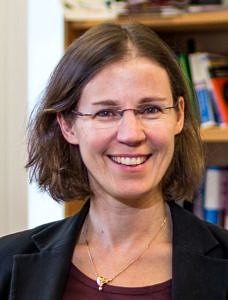
Stefanie Dehnen obtained her diploma in 1993 and her doctoral degree in 1996 from the University of Karlsruhe (KIT) under the supervision of Dieter Fenske on experimental and theoretical investigations of copper sulfide and selenide clusters. After a postdoctoral stay with Reinhart Ahlrichs (1997) she completed her Habilitation in Inorganic Chemistry in 2004. In the same year she was awarded the Wöhler Young Scientists Award from the German Chemical Society (Gesellschaft Deutscher Chemiker, GDCh). In 2005, she received a Heisenberg Grant from German Research Foundation (Deutsche Forschungsgemeinschaft, DFG) and the State–of–Baden–Württemberg Teaching Award. Since 2006 she has been Full Professor of Inorganic Chemistry at Philipps University of Marburg. In 2006, she also became Director and from 2012–2014, she was Executive Director of the Scientific Center of Materials Science at Philipps–Universität Marburg. She is currently an elected member of the Board of the Division for Inorganic Chemistry (Wöhler–Vereinigung für Anorganische Chemie) at GDCh, elected member and spokesperson of the Review Board (Fachkollegium) for Molecular Chemistry at DFG, and Editorial Board or Editorial Advisory Board Member of several scientific journals. As from 2016, she has been a full member of Göttingen Academy of Sciences and Humanity (Akademie der Wissenschaften zu Göttingen) and a full member of Academy of Sciences and Literature, Mainz (Akademie der Wissenschaften und der Literatur Mainz). Her current research interests comprise synthesis, formation mechanisms, stability, reactivity, and physical properties of compounds and materials with binary and ternary chalcogenidometalate anions, organotetrel chalcogenide compounds, binary Zintl anions and ternary intermetalloid clusters.
Contact:
Philipps–Universität Marburg
Fachbereich Chemie und Wissenschaftliches Zentrum für Materialwissenschaften
Hans–Meerwein–Straße 4
35032 Marburg, Germany
Email: dehnen@chemie.uni–marburg.de
Prof. Svetlana B. Tsogoeva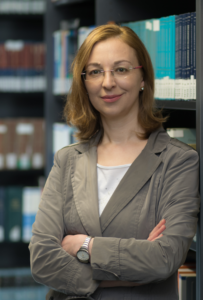
Svetlana B. Tsogoeva is Professor of Organic Chemistry at the Friedrich–Alexander–University of Erlangen–Nuremberg, Germany, since February 2007. She received her Diploma in Chemistry with Distinction in 1995 from St. Petersburg State University, where she completed her doctoral thesis in 1998 on the “Synthesis of Modified Analogues of Steroid Estrogens” supported by Procter & Gamble. In 1998, she moved to the Johann Wolfgang Goethe–University Frankfurt am Main, Germany, for a postdoctoral project under the sponsorship of the DFG (Graduate School “Chemische und Biologische Synthese von Wirkstoffen”), where she was dealing with the synthesis of chiral amidinium ions and their application as organocatalysts for the preparation of (+)–estrone derivatives using Diels–Alder reactions. In July 2000 she joined the Degussa AG Fine Chemicals Division in Hanau–Wolfgang, Germany as a research scientist, where she has been working on the synthesis and the application of new oligopeptide catalysts for the enantioselective Julia–Colonna asymmetric epoxidation of olefins. In January 2002 she was appointed a First Junior Professor in Germany at the Georg–August–University of Göttingen, where she established her own research group supported by BMBF, DFG, FCI and Degussa AG. Her research is currently focused on asymmetric organocatalysis, one–pot & domino processes, deracemization of chiral bioactive compounds by autocatalytic crystallization (CORE ITN & Pharmaindustrie–online.DE, CHEMIE.DE, Medizin–Aspekte.DE), synthesis of artemisinin–derived hybrids for medicinal chemistry, as well as chemistry in live cells.
Contact:
University Erlangen–Nürnberg
Department of Chemistry and Pharmacy
Nikolaus–Fiebiger–Str. 10
91058 Erlangen, Germany
Email: svetlana.tsogoeva@fau.de
Prof. Penelope Brothers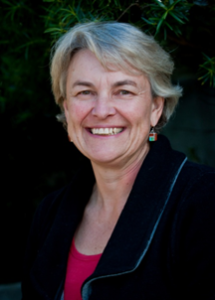
Penny Brothers was born and grew up in Auckland, New Zealand, and completed BSc and MSc (Hons) degrees in chemistry at the University of Auckland. In 1979 she was awarded a Fulbright Fellowship and set off for Stanford University to begin a PhD in chemistry under the supervision of Professor Jim Collman. Her PhD thesis, and much of her subsequent research work, has centered around the chemistry of porphyrin complexes. In 1986 she returned to Auckland and spent two years working as a postdoctoral fellow with Professor Warren Roper in the Department of Chemistry, focussing on organometallic chemistry. In 1988 she took up her current academic position at the University of Auckland and was promoted to Professor in 2009. She has been a visiting scientist at Los Alamos National Laboratory (2003, 2005, 2007) and a visiting professor at the University of California at Davis (1993), the University of Heidelberg (2003), the University of Burgundy (2004, 2006), the University of Münster (2010), Peking University (2011), the University of California at Berkeley (2014) and the University of Tromsø (2016–2018). She was awarded a Fulbright Senior Scholar Award in 2007 and served as President of the New Zealand Institute of Chemistry in 2017. She is currently a Principal Investigator in the MacDiarmid Institute for Advanced Nanomaterials, on the Marsden Fund Council and an Associate Editor of Chemical Communications. Her current research brings together her interests in porphyrin chemistry, the main group elements and organometallic chemistry. She is currently investigating the chemistry of boron coordinated to porphyrin and corrole ligands, BODIPY fluorophores for sugar recognition and surface patterning using molecular pentagons. She has a number of research collaborations in NZ and internationally.
Contact:
Science Center 302 – Bldg 302
23 Symonds St
Auckland 1010, New Zealand
Email: p.brothers@auckland.ac.nz
Prof. Ángela Sastre–Santos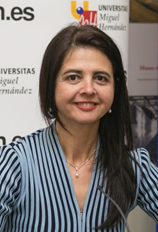
Ángela Sastre–Santos is currently Full Professor of Organic Chemistry (2010) and Deputy Head of the Instituto de Biongeniería at the Universidad Miguel Hernández de Elche. She studied chemistry at the Universidad Autónoma de Madrid, where she obtained her Ph.D under the supervision of Tomás Torres. Subsequently, she spent 6 months as a European Postdoc Fellow in the École Supérieure de Physique et Chimie Industrielles in Paris (Prof. Jacques Simon). She worked as posdoctoral fellow to Prof. Fred Wudl’s group for 2 years at the Institute for Polymers and Organic Solid, University of California, Santa Barbara and at the Department of Chemistry and Biochemistry, University of California, Los Angeles. She moved in 1998 to the Universidad Miguel Hernández de Elche (Elche, Spain). Her research interest focuses on the synthesis of molecular and supramolecular electroactive systems with nano– and biotechnological applications. She is member of the American Chemical Society, Electrochemical Society, Society of Porphyrins and Phthalocyanines and the Spanish Royal Chemical Society; within the latter, she is the President of the Nanoscience and Molecular Material Division (March 2013–). She has published more than 130 peer–reviewed articles.
Contact:
Universidad Miguel Hernández, Elche
Instituto de Bioingeniería
Avda. de la Universidad s/n
03202 Elche, SPAIN
Email: asastre@umh.es
Prof. Malika Jeffries–EL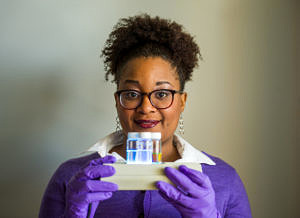 Malika Jeffries–EL received BA degrees in Chemistry and Africana Studies at Wellesley College and Master’s and Ph.D. degrees in chemistry from The George Washington University. After spending one year at Smith College as a Mendenhall Fellow she worked as a post–doctoral researcher under the direction of Professor Richard D. McCullough at Carnegie Mellon University. In 2005, she joined the faculty in the Chemistry Department at Iowa State University and was promoted to associate professor with tenure in 2012. She was a Martin Luther King Jr. Visiting Professor in the chemistry department of the Massachusetts Institute of Technology in 2015. She joined the Department of Chemistry and Division of Materials Science at Boston Univeristy in 2016. Dr. Jeffries–EL’s research focuses on the development of organic semiconductors–materials that combine the processing properties of polymers with the electronic properties of semiconductors. She has authored over 40 publications, received over 3400 citations and given over 100 lectures domestically and abroad. She has won numerous awards including the 3M Non–Tenured Faculty Award (2008), the Lloyd Ferguson Award from the National Organization of Black Chemist and Chemical Engineers (2009), NSF CAREER award (2009), the ACS–Women Chemist Committee Rising Star award (2012) the Iota Sigma Pi Agnes Fay Morgan Award (2013) and ACS Fellow (2018). She is currently an Associate Editor for the Journal of Materials Chemistry C. She has also served on the editorial advisory boards for Macromolecules and Chemical and Engineering News. Professor EL, is also a dedicated volunteer and has served in several activities within the American Chemical Society including the advisory board for the Women Chemist of Color Initiative, Member–at–large for the Organic Division, Program co–chair for the Polymer division and councilor for the Ames local section. She also serves the community through her work with Alpha Kappa Alpha Sorority, Incorporated (AKA). Dr. Jeffries–EL is a native of Brooklyn, New York. Her research focuses on the synthesis of novel pi–conjugated materials and the investigation of structure–property relationships in these systems. These organic semiconductors are of technological importance impacting a variety of areas including energy (solar cell), electronics (transistors) and life sciences (sensors). Thus, research in the group is highly interdisciplinary combining elements of organic chemistry, theory and materials science
Malika Jeffries–EL received BA degrees in Chemistry and Africana Studies at Wellesley College and Master’s and Ph.D. degrees in chemistry from The George Washington University. After spending one year at Smith College as a Mendenhall Fellow she worked as a post–doctoral researcher under the direction of Professor Richard D. McCullough at Carnegie Mellon University. In 2005, she joined the faculty in the Chemistry Department at Iowa State University and was promoted to associate professor with tenure in 2012. She was a Martin Luther King Jr. Visiting Professor in the chemistry department of the Massachusetts Institute of Technology in 2015. She joined the Department of Chemistry and Division of Materials Science at Boston Univeristy in 2016. Dr. Jeffries–EL’s research focuses on the development of organic semiconductors–materials that combine the processing properties of polymers with the electronic properties of semiconductors. She has authored over 40 publications, received over 3400 citations and given over 100 lectures domestically and abroad. She has won numerous awards including the 3M Non–Tenured Faculty Award (2008), the Lloyd Ferguson Award from the National Organization of Black Chemist and Chemical Engineers (2009), NSF CAREER award (2009), the ACS–Women Chemist Committee Rising Star award (2012) the Iota Sigma Pi Agnes Fay Morgan Award (2013) and ACS Fellow (2018). She is currently an Associate Editor for the Journal of Materials Chemistry C. She has also served on the editorial advisory boards for Macromolecules and Chemical and Engineering News. Professor EL, is also a dedicated volunteer and has served in several activities within the American Chemical Society including the advisory board for the Women Chemist of Color Initiative, Member–at–large for the Organic Division, Program co–chair for the Polymer division and councilor for the Ames local section. She also serves the community through her work with Alpha Kappa Alpha Sorority, Incorporated (AKA). Dr. Jeffries–EL is a native of Brooklyn, New York. Her research focuses on the synthesis of novel pi–conjugated materials and the investigation of structure–property relationships in these systems. These organic semiconductors are of technological importance impacting a variety of areas including energy (solar cell), electronics (transistors) and life sciences (sensors). Thus, research in the group is highly interdisciplinary combining elements of organic chemistry, theory and materials science
Contact:
Department of Chemistry
Boston University
590 Commonwealth Ave
Boston MA, 02215, USA
Email: malikaj@bu.edu
Dr. Araceli González Campaña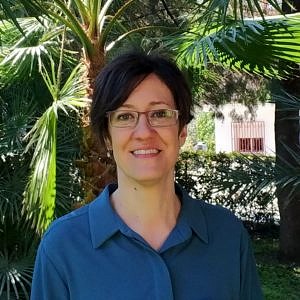
Araceli González Campaña received her PhD in 2008 from the University of Granada under the supervision of Prof. Juan M. Cuerva and J. E. Oltra, working on the development of new synthetic methods based on radical and organometallic chemistry. After a short postdoctoral stage in the group of Prof. D. J. Cárdenas at the UAM (Madrid), in 2010 she joined the group of Prof. David A. Leigh (University of Edinburgh) as postdoctoral researcher to work in the field of molecular machines. Since 2015, she is a ‘Ramón y Cajal’ Researcher at the University of Granada where she has initiated her independent career. In 2015 she received the ERC–Starting Grant. Her current research interests focus on the synthesis and study of curved distorted aromatics searching forinteresting (chir)optical and electronic properties.
Contact:
Departamento de Química Orgánica
Universidad de Granada
C/ Severo Ochoa, s/n
18071 Granada, Spain
Email: araceligc@ugr.es
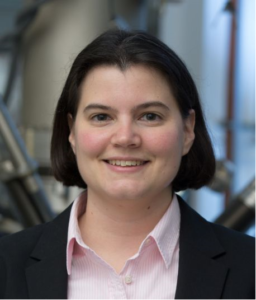
University Erlangen–Nürnberg
Department of Physics
Erwin–Rommel–Str. 1
91058 Erlangen, Germany
Email: sabine.maier@physik.uni–erlangen.de
Prof. Janina Maultzsch
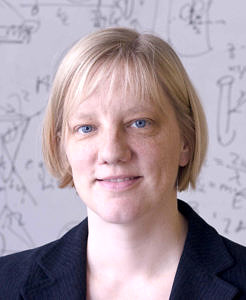
Contact:
University Erlangen–Nürnberg
Institut für Physik der Kondensierten Materie
Staudtstraße 7
91058 Erlangen
Germany
Email: janina.maultzsch@fau.de
Dr. Raquel de la Peña Alonso
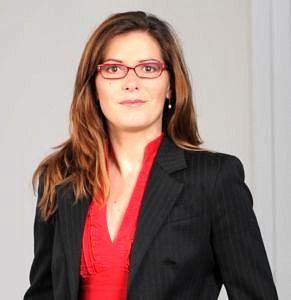
Raquel de la Peña is senior strategist at Siemens Corporate Technology since 2014. She obtained her Bachelor in Chemistry at the Manchester Metropolitan University and got her Masters at the Universidad Complutense from Madrid (Spain) in year 2000. In 2004, she completed her PhD on Materials Science in Universidad Autónoma of the same city in the field of Polymer Derived Ceramics. Her academic career continued as research scientist at the University of Trento (Italy) and University ofColorado at Boulder (USA) for further two years. After that, she moved to Germany and worked as freelance consultant formaterial topics for one year. Raquel joined Siemens in 2008,where she worked as Project Manager for material–related R&D topics in Corporate Technology until 2012. Afterwards, she moved into the Technology and Innovation Management department, where she is in charge to develop Siemens technology portfolio and contribute to the technology strategy of the company.
Siemens AG
Technology and Innovation Management
Otto–Hahn–Ring 6
81739 Muenchen, Germany
Email: raquel.delapena@siemens.com
Dr. Nina Meinzer

Nina Meinzer is a Senior Editor at Nature Communications based in London and part of the Quantum, Atomic, Molecular and Optical Physics team. A physicist by training, she received her PhD from the Karlsruhe Institute of Technology (KIT) for her work on the interaction of plasmonic metamaterials and optical emitters in 2011. She then moved to the University of Exeter in the U.K. as a postdoctoral researcher, where she first continued to investigate similar interactions of plasmons and optical emitters at the nanoscale. After 3 years, she decided to switch gears and study metamaterials and sub–wavelength antennas at microwave frequencies. In May 2016, Nina joined Nature Communications where she looks after some of the journal’s optics content, focussing on nonlinear optics, lasers, topological photonics and optomechanics. She is a member of the editorial steering group of the Nature Research Awards for Inspiring Science and Innovating Science that aim to celebrate and support the achievements of women in science and those dedicated to encouraging participation of girls and young women with STEM subjects. She is also on the judging panel for the 2018 Inspiring Science Award.
Nature Communications
4 Crinan Street
London N1 9XW
United Kingdom
Email: nina.meinzer@nature.com
Dr. Magda Luthay
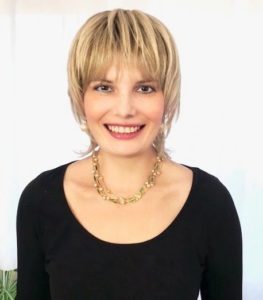
Contact:
Friedrich–Alexander–Universität Erlangen–Nürnberg
Office of Equality and Diversity
Am Weichselgarten 9
91058 Erlangen, Germany
Email: magda.luthay@fau.de
